

Locust Creek Covered Bridge
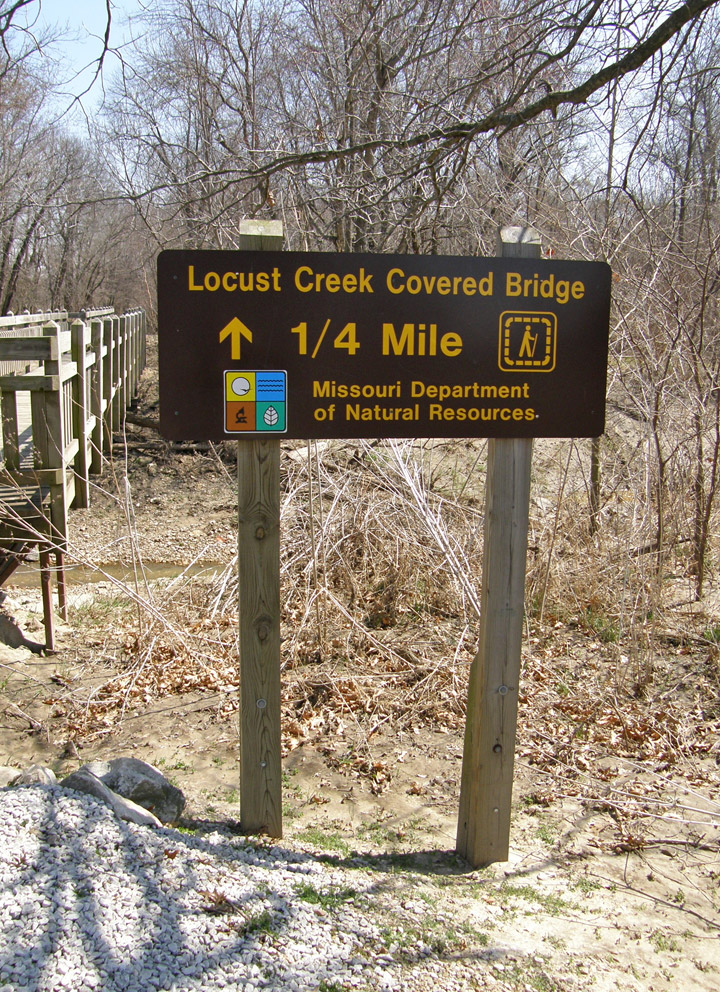
the walk to the covered bridge
Locust Creek Covered Bridge, built in 1868, once housed the nation's first transcontinental road, Route 8. Today, it is the longest of the four remaining bridges measuring 151 feet.
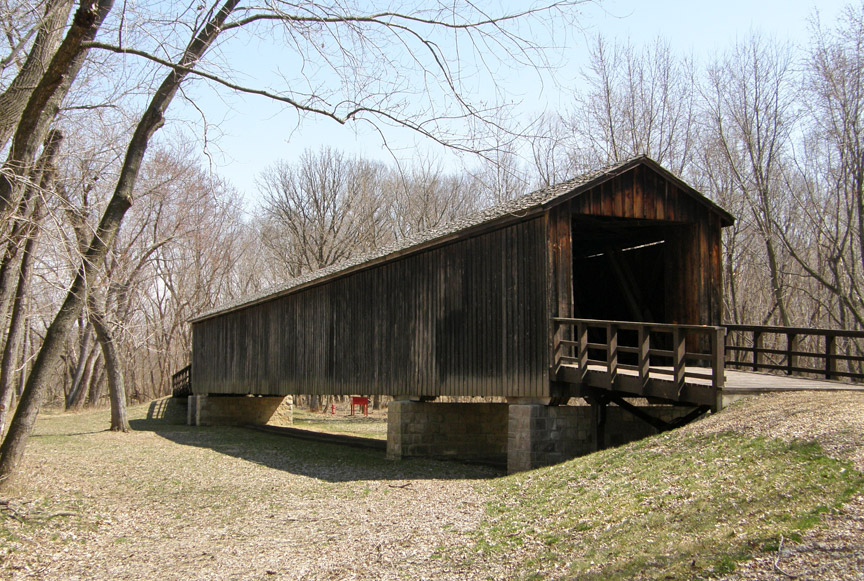
Locust Creek Covered Bridge
GPS
N39° 47.56
W93° 14.30
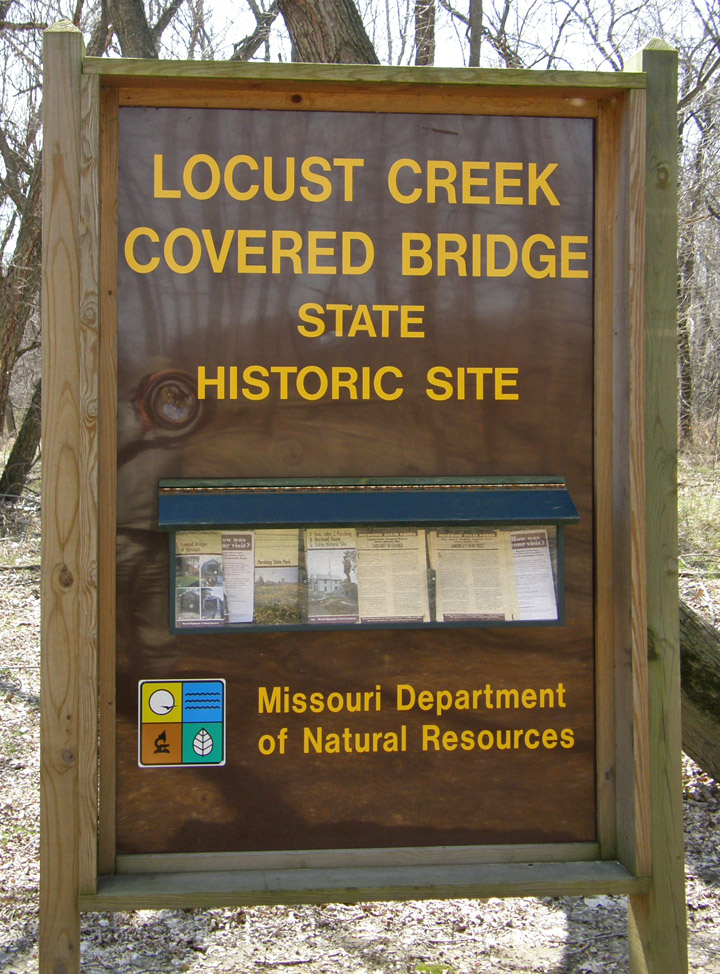
Covered bridges are nostalgic reminders of days gone by. Locust Creek Covered
Bridge not only reminds us of how "life's highway" has changed, but also how
traveled highways and creek channels can change.
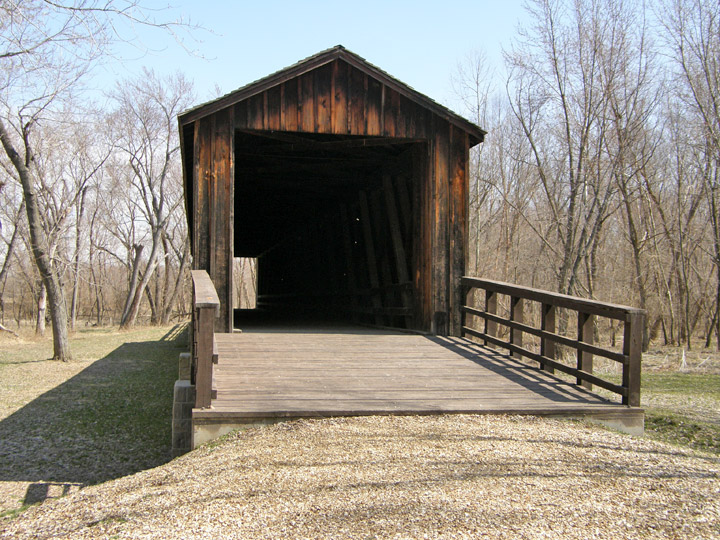
Locust Creek Covered Bridge was built in 1868 by the construction firm Bishop
and Eaton. Originally known as the Linn County Bridge, Locust Creek Covered
Bridge is the longest of the four surviving covered bridges in the state at 151
feet.
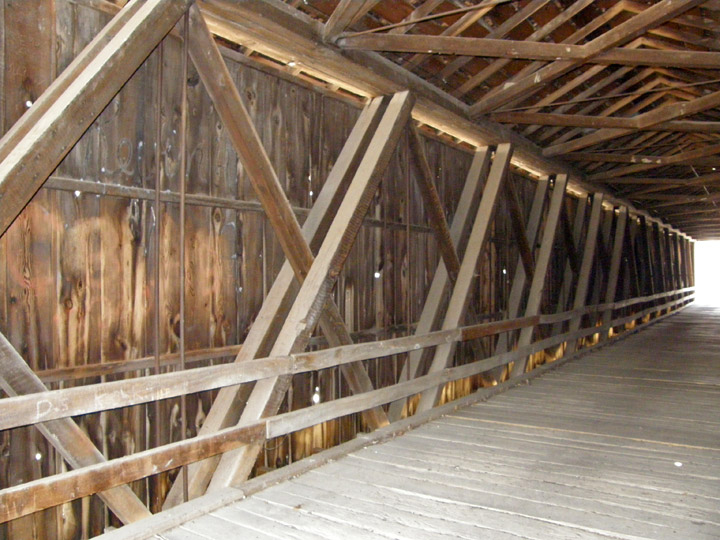
Howe Truss
The bridge was built out of white pine using the Howe-truss system, named for William Howe, who patented the design in 1840. The essential features of the design were its use of vertical iron rods to draw the diagonal wooden members tight against the top and bottom of the bridge. The bridge features arched entrances with ramps sloping away from both ends.
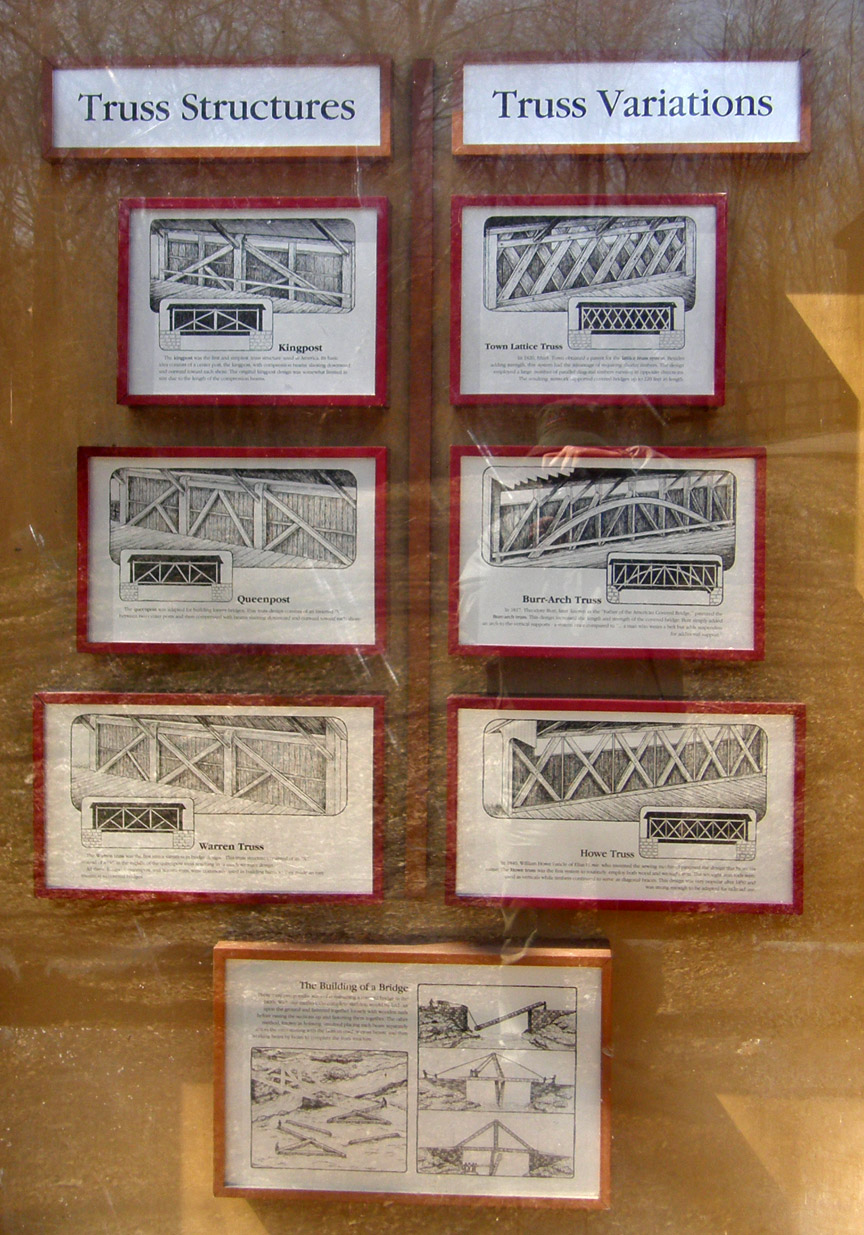
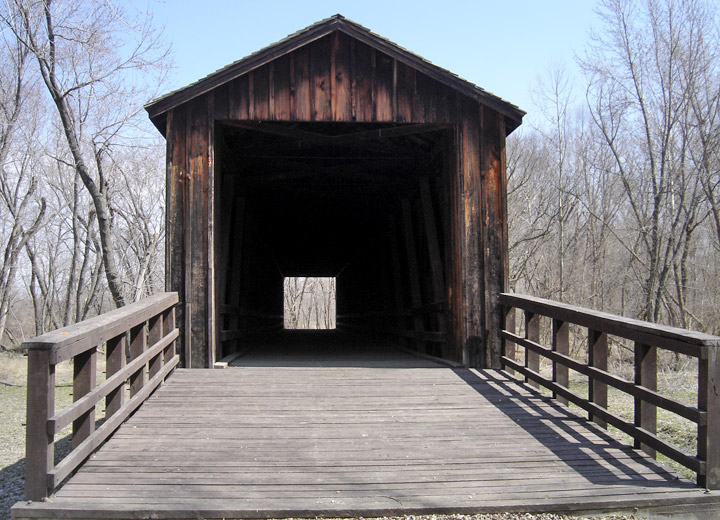
Locust Creek Covered Bridge represents the extent that our surroundings change
over time, as grass, not water, lies underneath it. Running parallel to the
Hannibal and St. Joseph Railroad, the bridge was situated on the main east-west
road in northern Missouri. Located midway between Laclede and Meadville, it
served a local population that included the young John Joseph Pershing, who
became the nation's highest-ranking military commander. As a boy, Pershing swam
and fished in the creek near the bridge.
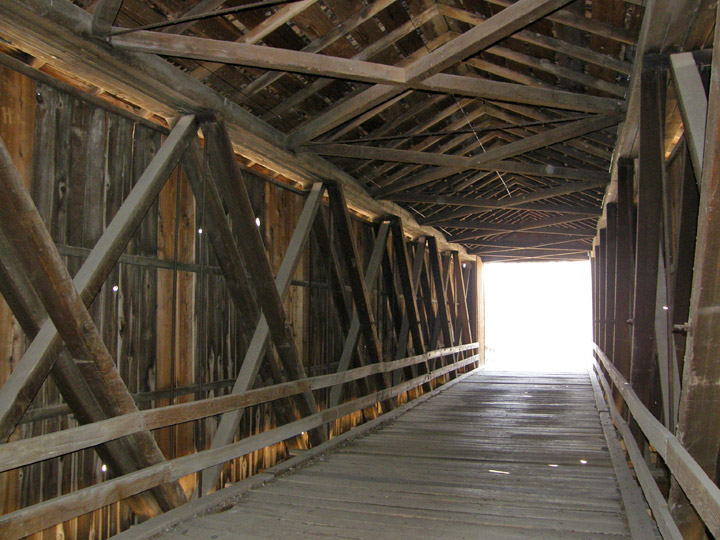
The bridge once served as a link over Locust Creek on America's first
transcontinental road. Shortly before World War I, Route 8 was laid out as the
first transcontinental road, crossing over Locust Creek Covered Bridge. Just as
horse-drawn wagons and buggies were gradually replaced with cars, in 1930, U.S.
Highway 36 replaced Route 8. Locust Creek Covered Bridge no longer would house a
transcontinental road.
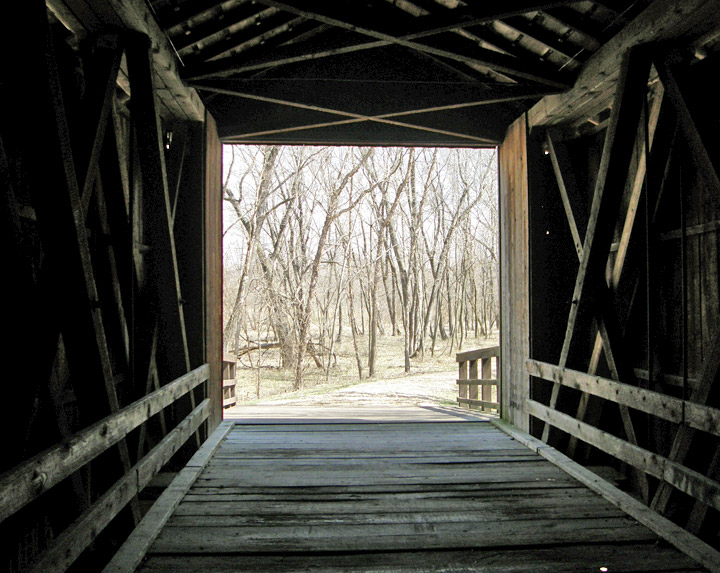
Today, the road across Locust Creek Covered Bridge is not the only thing you'll
find missing. Most of Locust Creek's channel was straightened following World
War II, leaving the bridge spanning a dry creek bed. Over the years, floodwaters
deposited topsoil, filling the empty creek bed, and causing Locust Creek Covered
Bridge to rest on the ground.
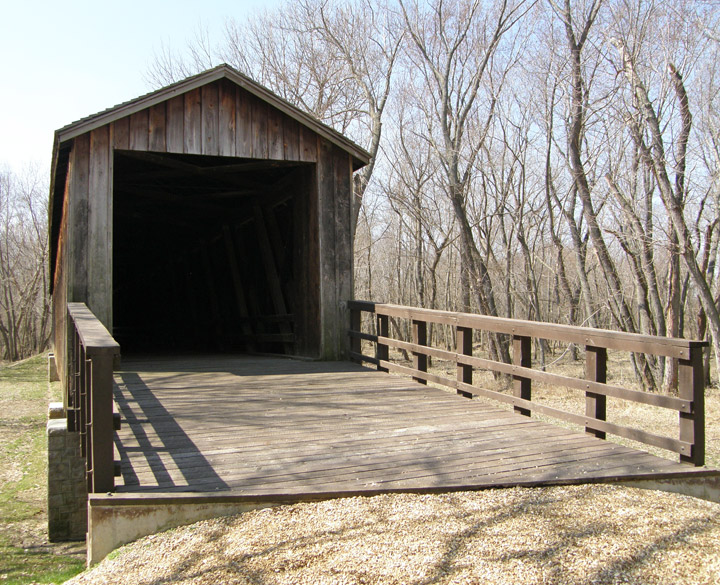
In 1967, nearly 100 years after its completion, the Missouri Legislature passed
a bill authorizing the Missouri State Park Board to take possession of, repair
and preserve the then-five remaining covered bridges in the state, including
Locust Creek. Two years later, after restoration, it was placed in the National
Register of Historic Places. In 1991, the bridge was raised six feet to give it
once again the appearance of a bridge and to protect the floor from wet ground
below. Adjacent to the bridge is a kiosk sheltering panels that interpret the
history of the bridge.
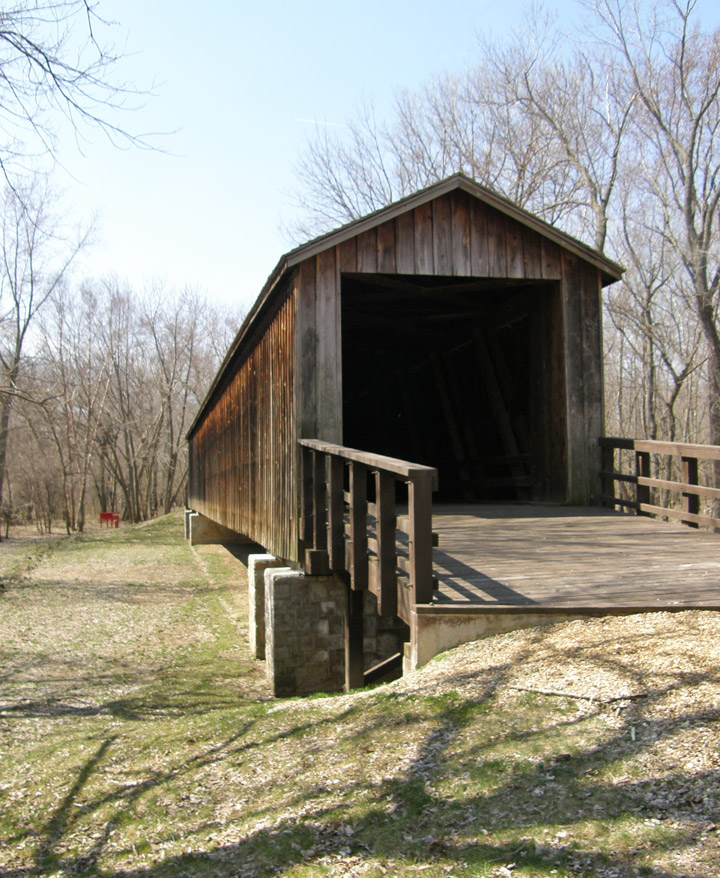
Today, the Missouri Department of Natural Resources preserves and protects the
four remaining covered bridges in the state.
Burfordville Covered Bridge
is part of Bollinger Mill State Historic Site in southeast Missouri.
Sandy Creek Covered Bridge
and Union Covered Bridge state
historic sites are located in Jefferson and Monroe counties respectively. A
flood destroyed the fifth bridge, Mexico Covered Bridge, shortly after the state
took possession.
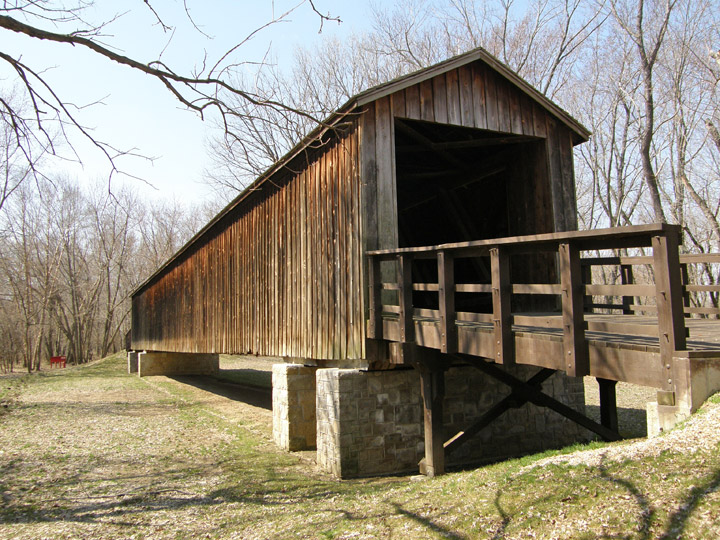
Originally built to provide strength and shelter to the bridge structure,
covered bridges also provided shelter from wind, snow and rain for riders in
uncovered buggies and carriages. Missouri's surviving covered bridges are
precious examples of fine craftsmanship using simple but effective engineering
techniques.

While in the vicinity of Locust Creek Covered Bridge State Historic Site, visit
Gen. John J. Pershing Boyhood Home
State Historic Site and Pershing State Park to capture more of the area's
cultural and natural history.
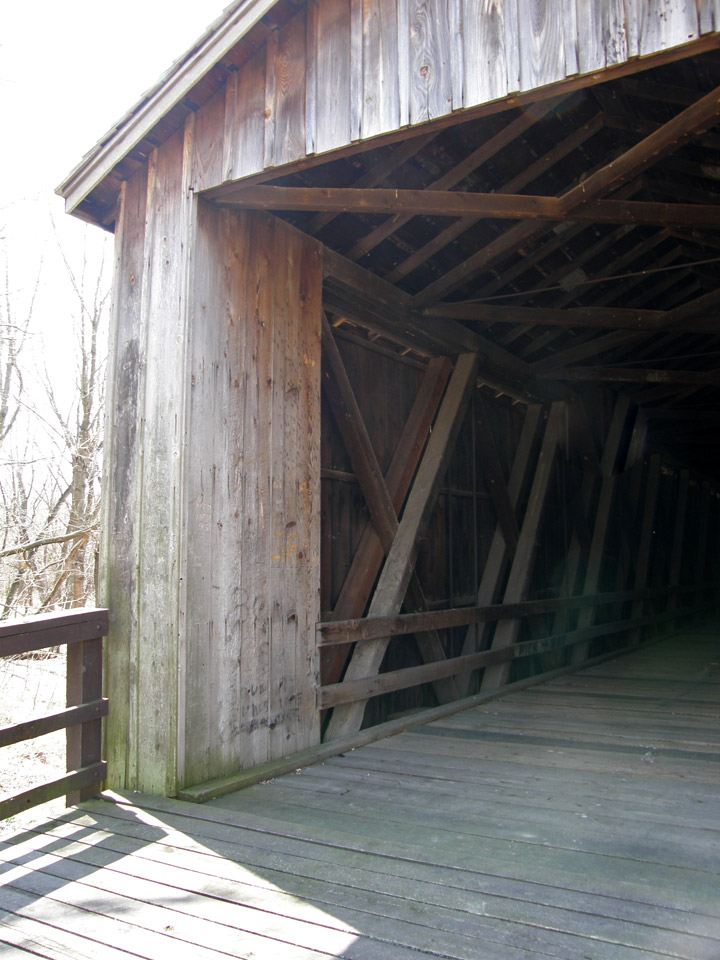
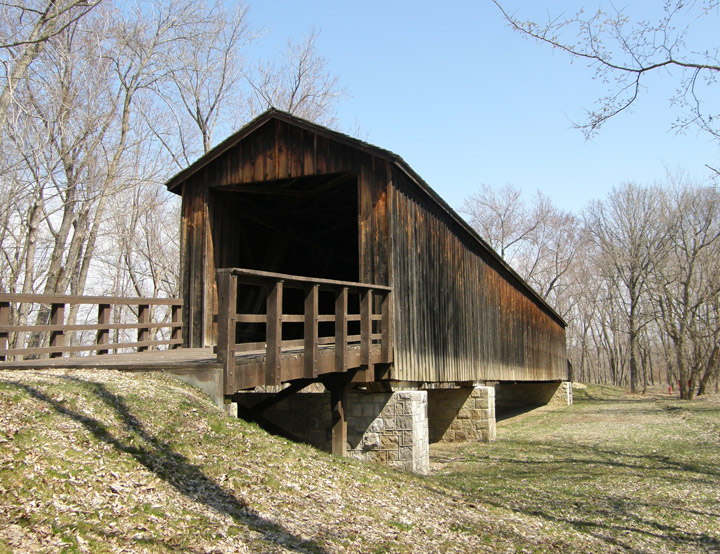
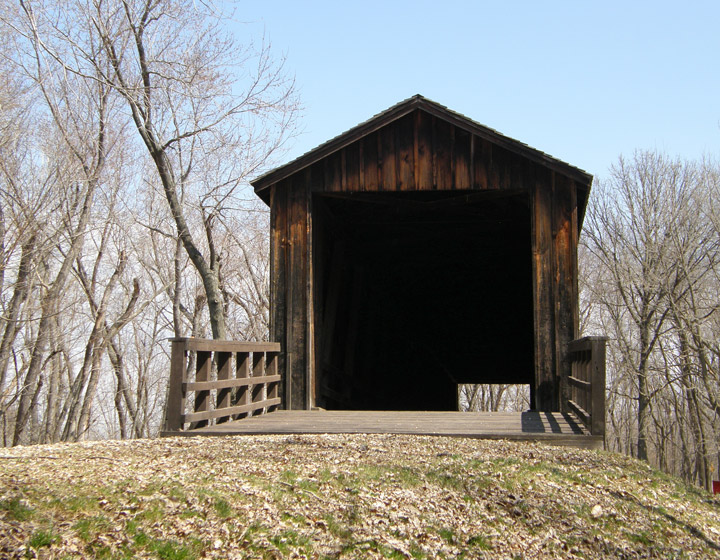
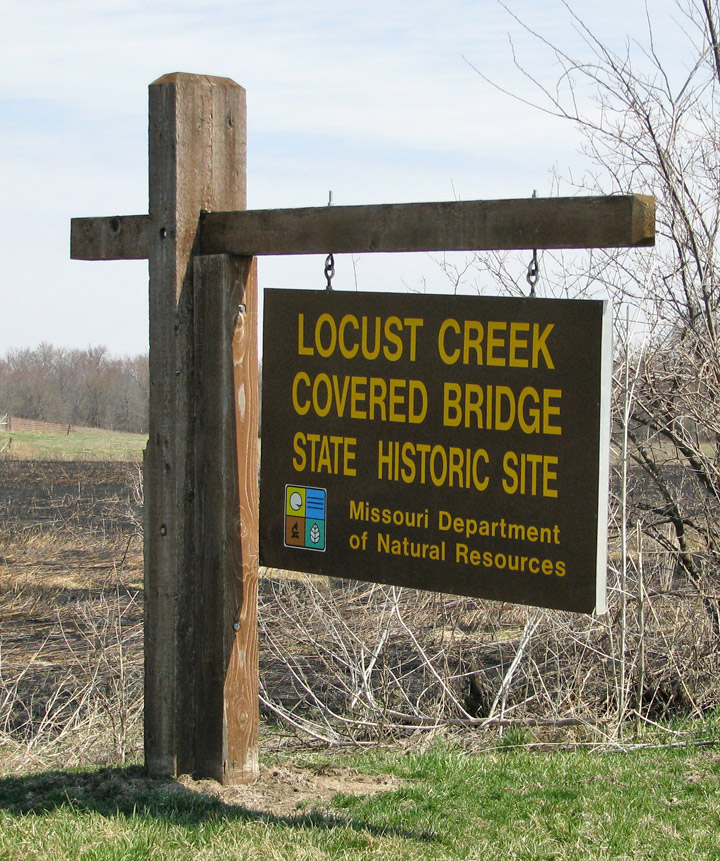
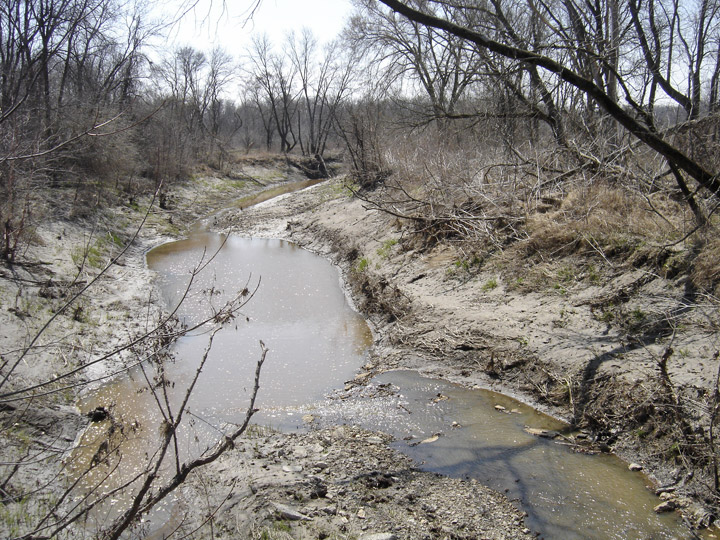
the redirected creek
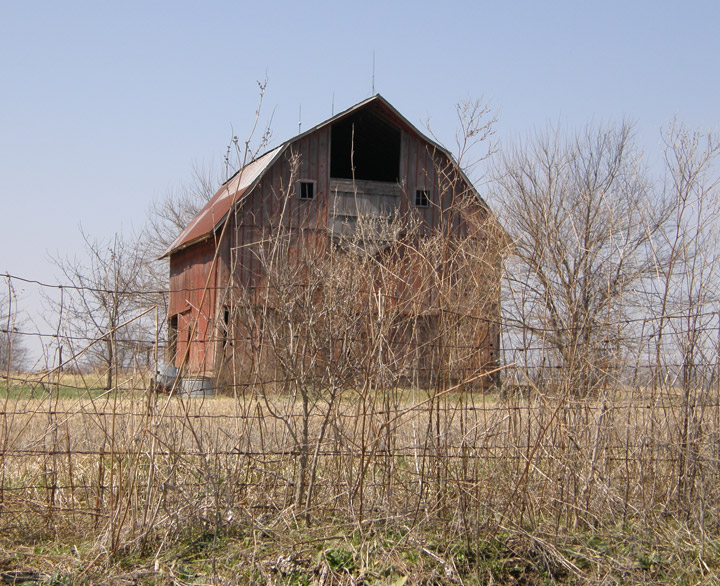
a nearby barn